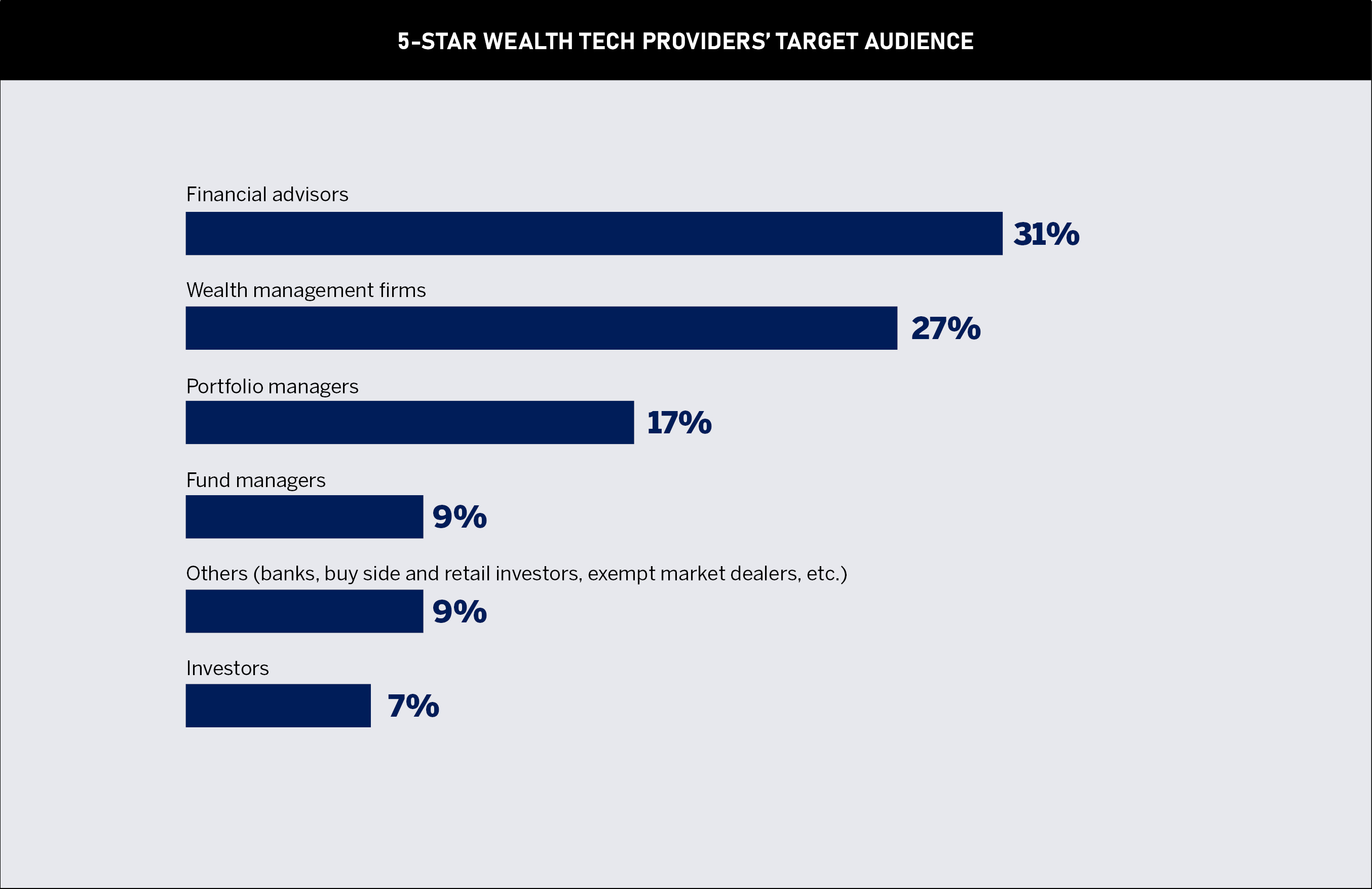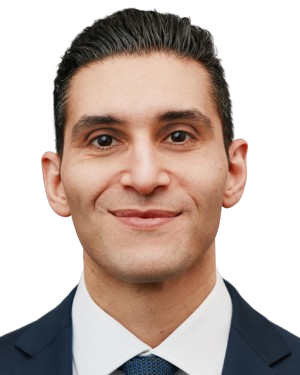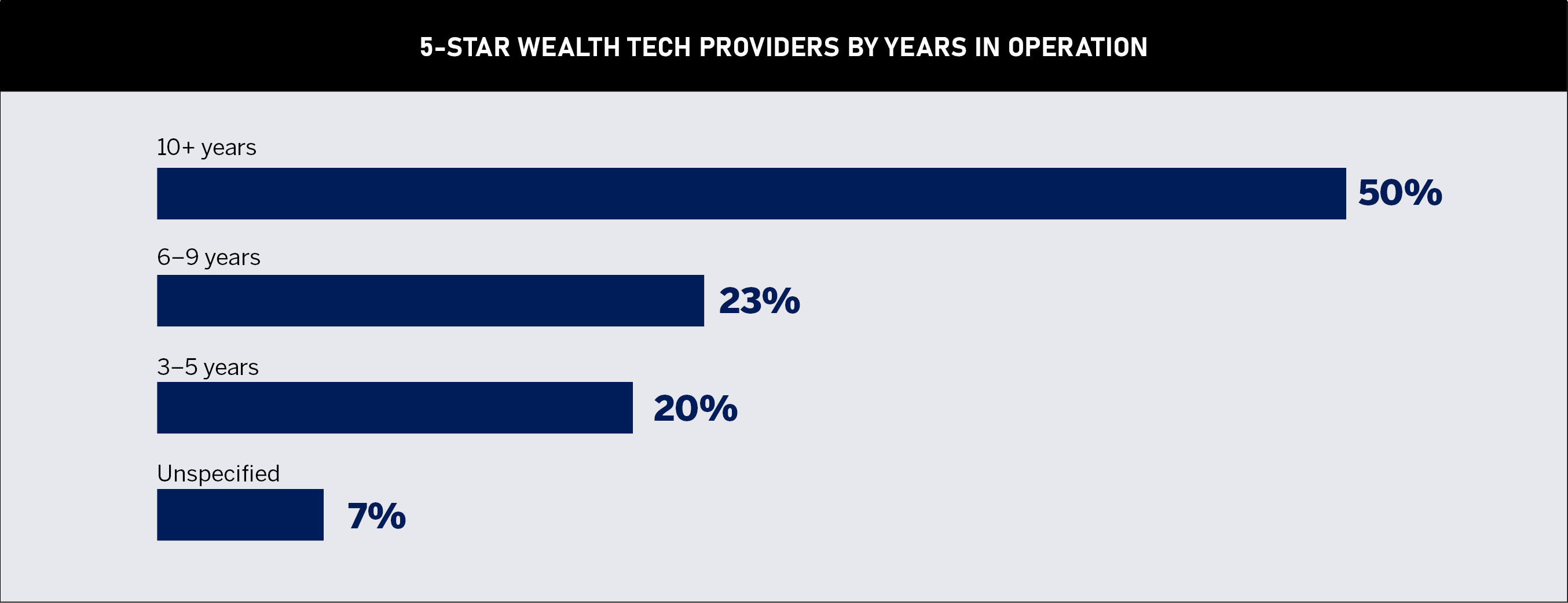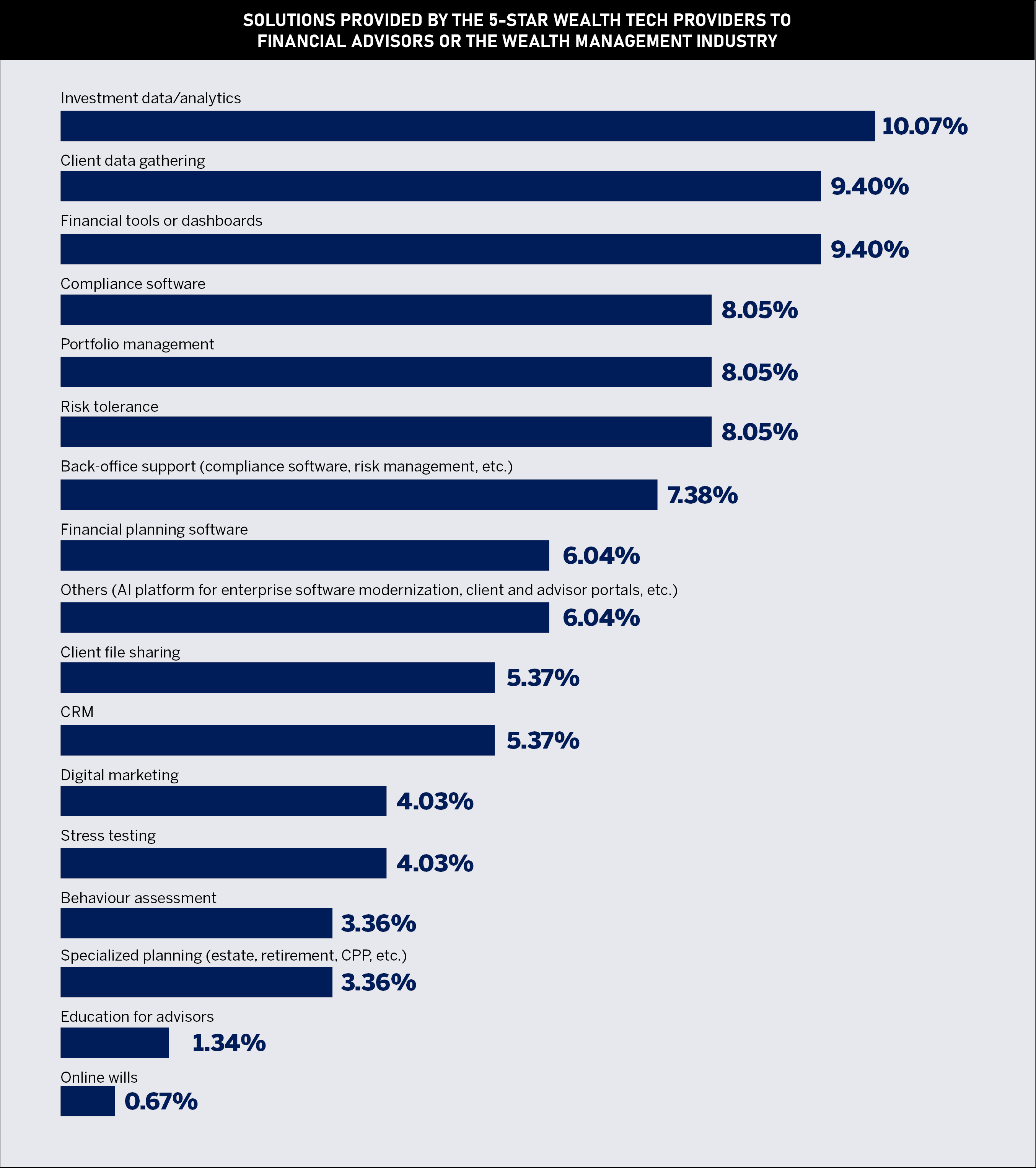

Jump to winners | Jump to methodology
The wealth tech space is hurtling forward and shows no signs of slamming on the brakes due to a surge in demand for its services. However, only certain firms within Canada’s industry with the correct profile to succeed are receiving the attention and influx of investment.
The Canadian landscape is primed for select fintech providers to capitalize because the financial services industry is highly concentrated. McKinsey & Company reports that, as of 2022, the top five banks generated more than three-quarters of banking revenue. This, combined with their analysis ranking Canada among the bottom five developed countries for adoption of digital banking, digital B2B services, and fintech solutions, highlights the size of the opportunity for disruption.
David Hurd, national wealth management leader at EY Canada, says, “A number of Canadian technology firms have attracted more private equity and venture capital. There’s money being invested in these companies, not just because their solutions themselves are seen to some degree as leading, but because of the demand and the growth opportunity.”
Part of the reason for the ramp up in demand is wealth firms are tackling different types of transformations and solutions. Some are looking to drive back-office efficiency through automation and AI, while others are seeking to replace legacy core platforms.
“One of the biggest challenges the industry has always had is there were few flexible end-to-end options, where you could essentially go through the whole client life cycle as an advisor using one tool to deliver all the different components,” says Hurd. “What that means is it’s very common when an advisor puts a wealth proposal together, that the data will not flow into the financial plan.”
That’s the opportunity a lot of Canada’s portfolio management software and fintech providers are exploiting, by turning themselves into one-stop shops. Hurd has an insightful take on whether this will impact the entire sector.
“The more you have smaller, independent firms, there’s going to be more demand for these wealth-in-a-box type platforms. But the interesting question is, will these platforms also be adopted at the large wealth managers? Arguably, they have a different level of capital to do the stitching together themselves,” he says.

FinTech Global’s data shows that funding for Canadian fintechs increased to $2.2 billion in 2024, which translates as:
an eight percent rise compared to 2023
a 34 percent increase from the $1.6 billion raised in 2020
However, this is tempered by a decline in deal volumes as investors focus on more established firms and select those providers primed for success.
EY Canada’s wealth technology lead, Ravin Kumar Srinivasan, underlines how wealth tech firms have awoken to the chance of creating something that can deliver for millions of end users.
“What we have been seeing very recently is fintechs starting to recognize a growing opportunity area to create an ecosystem, which is going to make an impact,” he says.
However, this is tempered by a decline in deal volumes as investors focus on more established firms and select those providers primed for success.
EY Canada’s wealth technology lead, Ravin Kumar Srinivasan, underlines how wealth tech firms have awoken to the chance of creating something that can deliver for millions of end users.
“What we have been seeing very recently is fintechs starting to recognize a growing opportunity area to create an ecosystem, which is going to make an impact,” he says
Infinite Investment Systems was an early mover in appreciating the need for an all-encompassing platform. Its flagship product, Harmony, is an end-to-end portfolio management (PM) system that is easy to use and solves the daily challenges in a firm’s operations and administration.
While many PM systems offer what seems to be a similar breadth of functionality, Infinite believes Harmony has unparalleled depth and features modules that cover:
portfolio accounting and valuation
performance measurement
client statements and tax reporting
trading and order management
compliance
CRM
regulatory reporting
fees and billing
fund accounting


Harmony is targeted at mid-size firms, as CEO Ali Zahedi explains.
“They tend to look for some of the efficiencies that a single platform brings. Harmony eliminates the need for them to have eight different applications and then worry about having the data come together and making sure all the pieces are in sync,” he says. “But, at the same time, change management is as difficult as convincing them to drop what they’re used to.”
Aware that many firms may see the benefits but are apprehensive about deployment due to the change in processes, Infinite has taken steps to counter this. It has successfully recruited former clients who have used Harmony for years.
“They were looking for new opportunities and ended up on our side of the fence, and having them is incredibly valuable,” says Zahedi. “It’s one thing for me, the programmer, to tell the client, ‘You can do this and do that.’ It’s another thing for someone who’s in their seat and has used the application to do exactly what they’re doing, telling them how it dealt with the clients, how it dealt with compliance, how it dealt with trading and performance fees, and so on.”
This advocacy and what Harmony can deliver have resulted over the last 12 months in:
15 percent client growth year over year (YOY)
100 percent retention YOY and additional user licenses/products across the existing client base
being ranked #1 used PM system among Portfolio Management Association of Canada member firms

Zahedi speaks of new adopters being blown away by Harmony’s depth of functionality. An example is performance calculation on the return of a portfolio, a simple concept. However, Harmony easily enables this to be filtered into different calculations.
“It can be time rate of return or internal rate of return. You can do it at the portfolio level, sector level, subsector level, family level, household level. You can do it only on a month-to-month basis, or you can go from any period to any period. You can include income, exclude income. You can do it net of fees or before fees. You can do it in different currencies or consolidate. You can even break it down to the security level, contribution, attribution,” he says. “I could go on and on, and our system does all of that.”
One aspect of Harmony’s power and depth is that Infinite has clocked up 20 years of continuous building. The team is aware of industry developments, particularly if a competitor develops a new feature that might be eye-catching but not necessarily substantive.
Zahedi says, “We have to play that game a little bit. The reality is there’s a lot of pretty looking stuff that comes out and, for us to be at the table, we’ve got to compete with that. Then, when we’re at the table, what actually puts us over the top is the depth of the system itself.”
Infinite’s reputation has inspired large financial institutions to show an interest in adopting Harmony. This is aided by Infinite being a SOC 2 Type II audited firm, meaning it has strict protocols around security and data handling, and it invests in ensuring security remains a fundamental consideration.
“We’ve got a lot of initiatives to push forward again with our comprehensive reporting in engine and data management solutions,” says Zahedi. “We are actively looking at certain acquisitions that we believe will be strategically beneficial. We believe bringing some of these businesses together is going to be better for the clients, better for the teams, and result in a more comprehensive offering.”
The explosion of AI has been a help and a hindrance for the firm, formerly known as Charli AI. An exponent of the tech long before it was fashionable, Charli Capital is cutting through the noise.
Its system, Charli, applies multidimensional AI to monitor a portfolio of securities and stay alert to any market changes that might require action on investments. It provides guidance on the health of a stock and a recommendation to buy, hold, or sell, with significant details to back up the recommendation and source attributions of the information.
In addition, Charli reads through company filings, earnings calls, market fundamentals, and hundreds of articles and publications in real time for each security being monitored.
Joel Emery, co-founder and CPO, says, “It’s frustrating that now three quarters of the world are AI experts. But on the positive side, it also brought a lot of momentum as all of a sudden, every CEO in the world wants an AI agenda. We’ve been able to capitalize but have had to work extra hard on our positioning and messaging to make sure people don’t see us as another chatbot.”
The initial concept was to harness AI’s ability to deal with massive amounts of data and the team followed a path to make its solution multidimensional.
“We don’t have just one or two models, but hundreds of models working in coordination to do all the tasks that the financial services space requires,” explains Emery.
Illustrating just how comprehensive Charli is, it has the capability to analyze:
over 100,000 public companies worldwide
75 million private companies in North America
“What differentiates us is we solve the hard problems first,” says Emery. “A lot of applications have embarked on the AI wave and they add some capabilities that interact with the AI, which most of the time is a search or generation tool. But we have AI at the core and that’s why we can scale to our levels.”
Even with such powerful AI, Charli has team members who overlook and crosscheck the models to ensure complete accuracy. All users receive a daily update on any development in the markets and investments they are monitoring. In the case of something being wrong in the data, users are alerted immediately at the end of each analysis.
Emery says, “It’s not a process that does auditing in the background, during every single run of an analysis, whether it’s a public or a private company, we deploy hundreds of AI agents. Any errors or issues will either be immediately corrected or will be flagged as something to pay attention to.”
Another standout feature embedded in Charli considers the competitive advantage of large financial institutions. These types of firms have deep knowledge of the finance sector and will configure the system in advanced ways, for example, they might have a proprietary way to measure the performance of a stock.
“We do not train our models with that because we consider that to be IP, which is another differentiation compared to some other tools, where all the interaction and input is used to retrain the model and make it better,” Emery says. “The large institutions see that they can trust the product and the specific models they are using will get better for their organization only, and their competition will not be able to take advantage.”


There is a range of subscription models ranging from US$150 per month to US$1,495, with higher costs for users needing even greater data feeds. To illustrate this, 83 percent of US companies with over $100 million in revenues are private, and that market is inaccessible for most small wealth management firms.
For the recently launched product, the first three months provide a limited snapshot of Charli’s impact but do show:
more than 300 users signed up
a target of US$$2.5 million in annual recurring revenue in 2025
The decision to forge a new brand as Charli Capital is based on identifying a problem in the investment world, considering the capital that its owners want to invest and, on the other hand, private companies that want to raise money.
Emery says, “These two come together in a very ineffective way today, and that’s why we merged with a company that had more of a financial footprint, as opposed to an AI footprint, and has a network of investors looking for that solution.”
Charli Capital feels it can provide a groundbreaking solution as its technology is scalable, whereas all the previous attempts have not been able to offer this. It’s also handing a golden ticket to smaller firms that can capitalize on their nimbleness relative to the large, global companies.
“There are a lot of VCs and angel networks that exist to try to solve this problem, but it’s not been solvable until there’s a scalable technology,” adds Emery. “We’re definitely a leader and are proud to provide a solution that’s going to disrupt the market. Ours is an automated way to provide very accurate insights and enable smaller firms to have a shot at competing at the highest level without investing millions in back-office resources.”

The platforms that succeed are not only able to add value and efficiencies but are crucially easy to adopt. This can be distilled into two crucial factors:
flexibility
scalability
This is underlined by EY Canada’s Kumar Srinivasan.
He says, “What will create an impact is, as we are getting into adopting AI, if platforms are coming as close to plug-and-play as possible. Instead of customizing it to every ecosystem, if there are certain use cases which can be applied across the industry that will increase the overall adoption.”
Similarly, EY Canada colleague Hurd has a theory on which platforms will succeed in the long run. He feels that enabling new functions is game-changing.
“What is important is if it enables the advisor or the firm to do things they couldn’t before,” he says. “There’s so many cases where you can use AI to do things way better, free up time and all of that. I think what will really get the most attention is where it enables new things to be brought into the value proposition, and people are going to expect that as AI evolves.”


Wealth Professional invited technology service providers from around Canada to submit nominations, detailing the problems or pain points their offering is designed to solve or relieve for wealth management professionals and how their solution differs from those offered by competitors.
The WP team objectively assessed each entry for detailed information, true innovation, and proven success – along with benchmarking against the other entries – to determine the 5-Star Wealth Tech Providers.